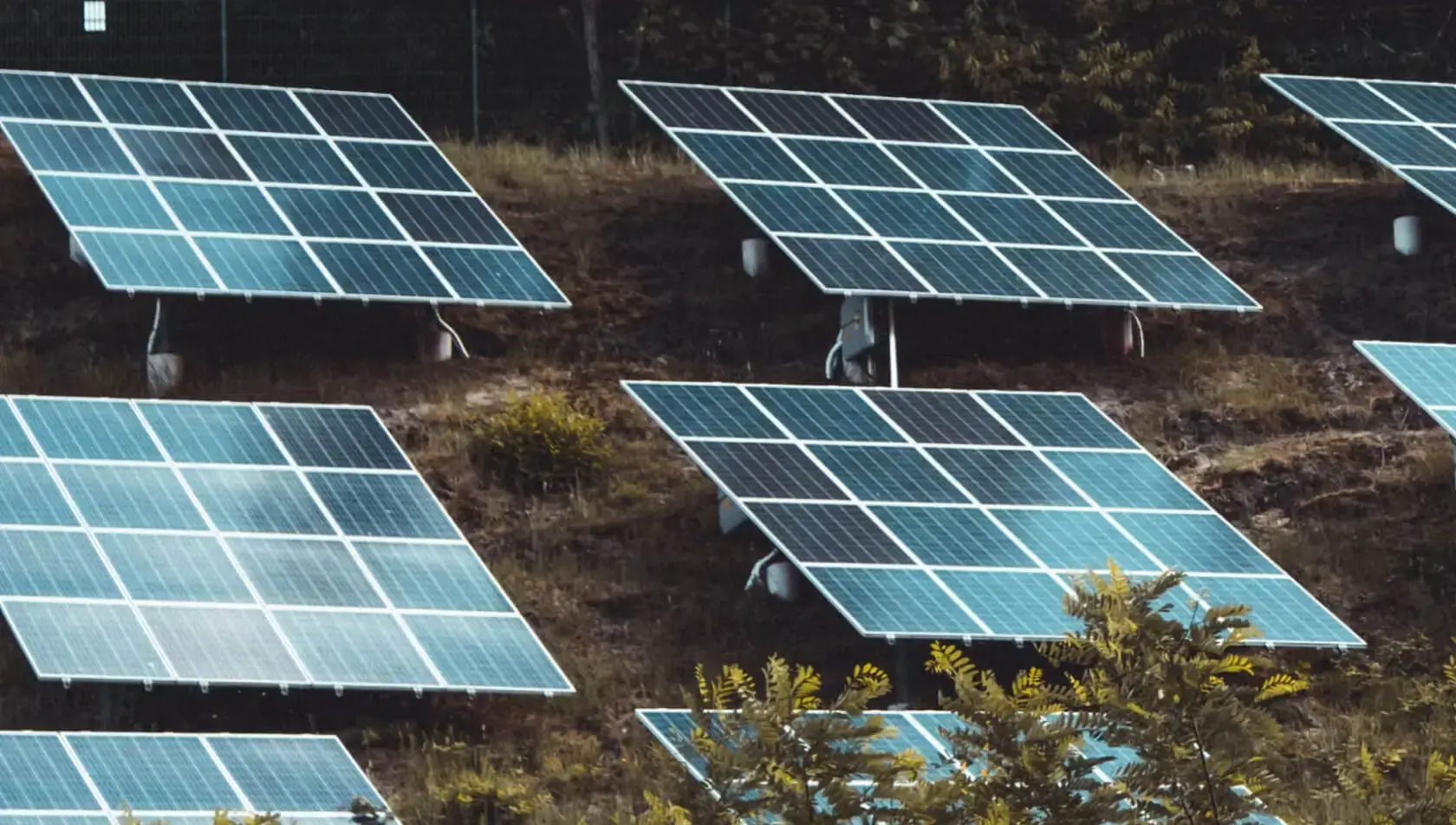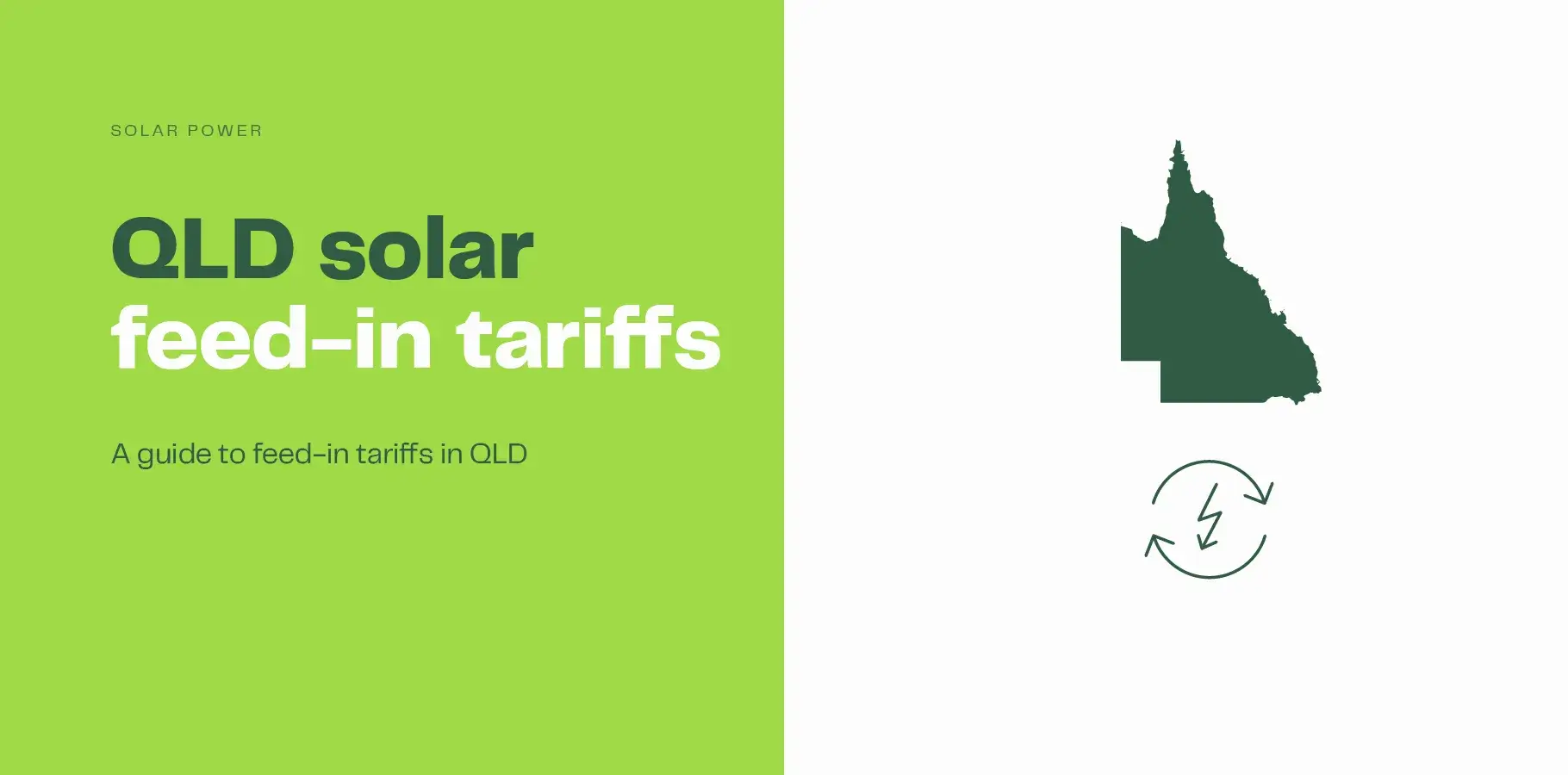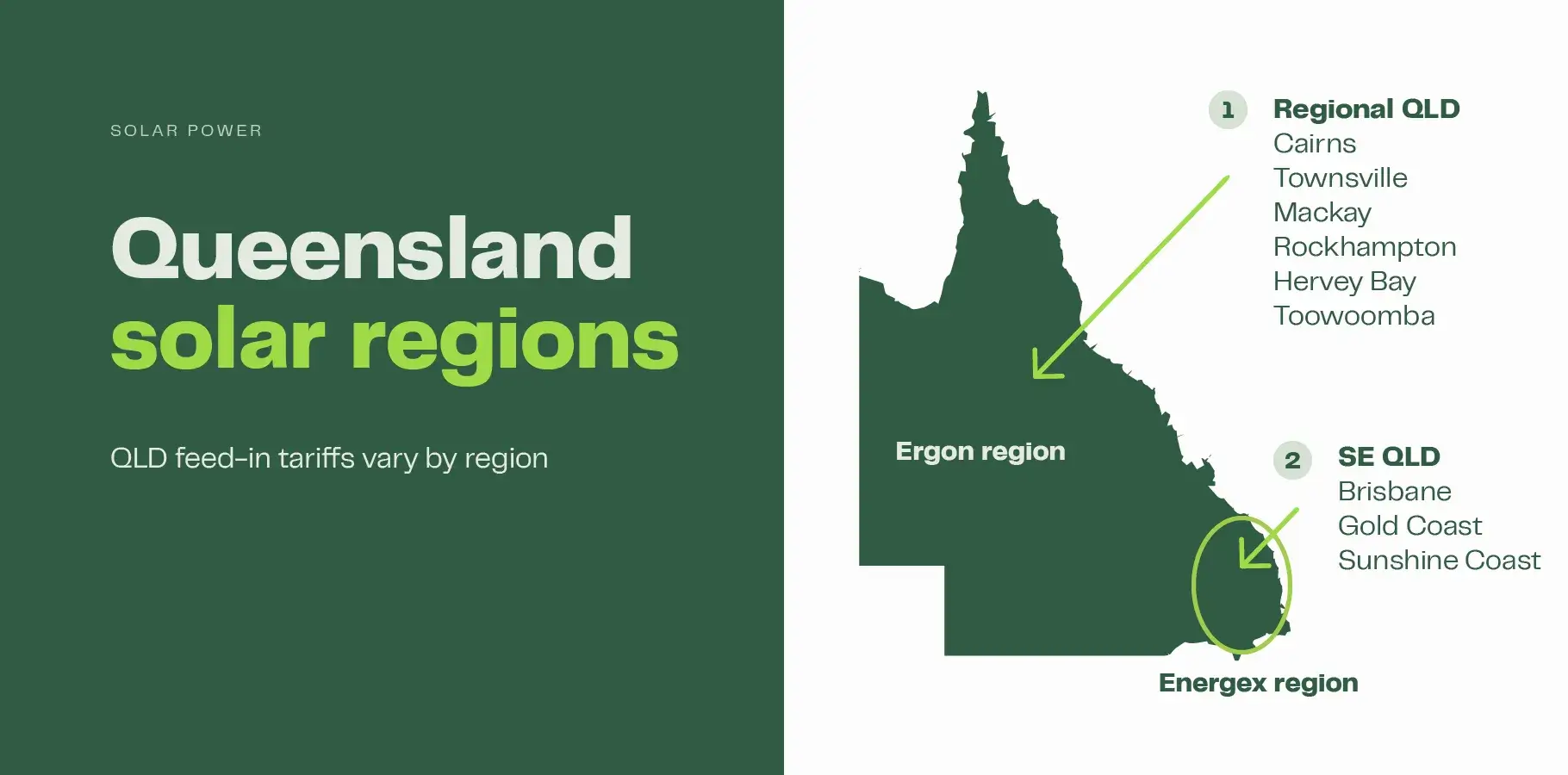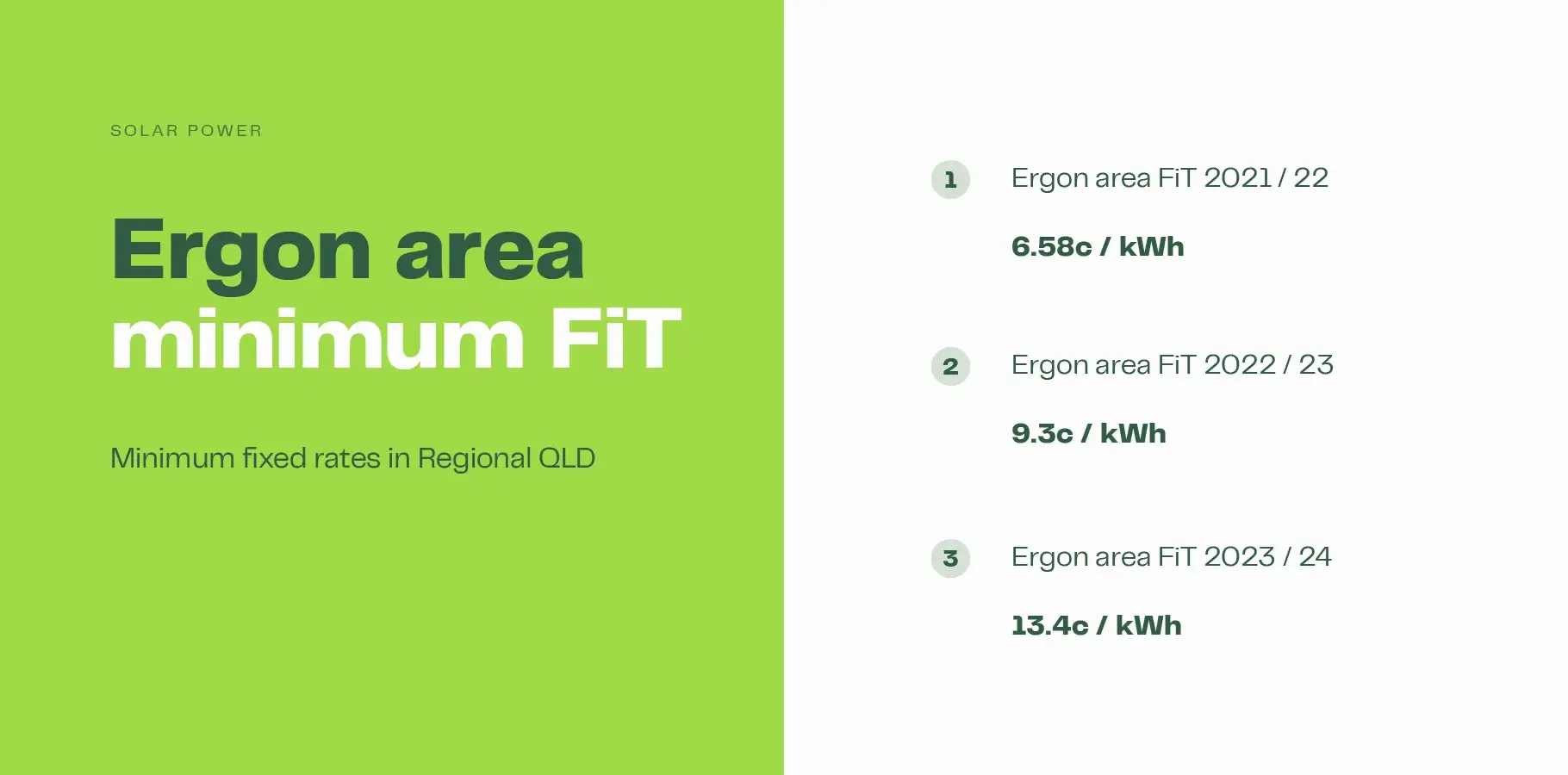Best solar feed in tariff QLD 2024
Find the best solar feed-in tariff QLD has to offer with our comprehensive run down of the highest solar FiTs on offer for Queensland residents in 2024.
Last updated: May 2024
Reading time: 4 minutes
Queensland is known for getting more than its fair share of sun. With an average year-round temperature of 26-degrees (6% higher than the national average) and more than 300 sunny days each year, QLD is the perfect place to invest in solar panels and capitalise on generous solar feed-in tariffs offered by electricity retailers.
What is the solar feed in tariff?
The solar feed-in tariff (FiT) is a credit offered to solar panel owners by electricity retailers for unused electricity that is sent back to the grid.
Sometimes referred to as solar credits or the solar buy-back scheme, solar owners can send leftover electricity back to the grid to receive a credit on their electricity bill at a predetermined cents per kWh rate.
History of solar FiT in Queensland
Solar Feed-in Tariffs (FiTs) have been available in Queensland since 2008 when they were used as an incentive in a bid to encourage solar adoption.
The Queensland government launched the 44c/kWh Solar Bonus Scheme (SBS) to eligible solar electricity system owners who successfully applied for the QLD SBS between 1 July 2008 and 9 July 2012.
Early adopters who registered for the SBS between 2008 and 2012 are still eligible to receive the fixed feed-in tariff (FIT) of 44c/kWh all the way through to 30 June 2028. To remain eligible, those who registered for the Solar Bonus Scheme during this period must maintain the original inverter capacity and continue to use the same account name that was registered prior to the 23rd November 2012.
Does QLD have a minimum solar feed-in tariff?
Queensland’s solar feed-in tariff rates are determined by where you live.
Solar owners in the South East Queensland region (Energex) – which accounts for roughly 2/3 of all Queensland residents, are not entitled to a minimum FiT. Conversely, residents in the Regional Queensland area (Ergon) are entitled to a generous minimum Solar FiT as part of the Queensland Government’s Solar Bonus Scheme. The Scheme is reviewed at the end of each financial year period.
South East Queensland ‘Energex’ area minimum FiT 2024
The South East Queensland ‘Energex’ area which includes Brisbane, the Gold Coast, and the Sunshine Coast (as far north as Noosa) does not have a minimum solar feed-in tariff.
Feed-in tariff rates in this area are voluntary retailer contributions offered by energy companies. Although energy companies are not obligated to offer any solar rebate in QLD, most of them do as a gesture of goodwill and to incentivise customers.
Regional Queenslander ‘Ergon’ area minimum FiT 2024
Solar owners in the regional Queensland network area called the Ergon network are offered a fixed feed-in tariff rate. The Ergon area FiT rate is reviewed each financial year, the current rate set is at 12.377 cents per kilowatt-hour for the 2024-2025 Financial Year.
The Ergon area FiT rate has seen significant increases in recent years as part of the Queensland Government’s Solar Bonus Scheme which continues to encourage solar adoption through generous incentives.
- Ergon area FiT FY21-22: 6.58c per kilowatt-hour
- Ergon area FiT FY22-23: 9.3c per kilowatt-hour (41% increase on FY21-22)
- Ergon area FiT FY23-24: 13.4c per kilowatt-hour (44% increase on FY22-23)
- Ergon area FiT FY24-25: 12.377c per kilowatt-hour (7.6% decrease on FY22-23)
Special FiT Rates for early adopters
Early solar adopters in Queensland that applied to install rooftop solar before the 10th of July 2012 are still eligible for the state’s generous Solar feed-in tariff Bonus of 44c per kilowatt-hour right through until the 1st of July 2028.
QLD’s best solar feed in tariff rates 2024
As of June 2024, Origin Energy offers the highest Max Solar FiT at 20c/kWh on solar systems purchased through Origin that are under 7kW in size. Ergon Energy offers the highest average Solar FiT (c/kWh) with a flat rate for minimum and maximum at 13.4 c/kWh.
Top 5 retailers in QLD by average solar feed-in tariff rates for 2024
Determining the best solar feed in tariff in QLD for 2024 comes down to your location, rebate eligibility, and the amount of excess solar that you are likely to produce. All things being equal, the retailers in Queensland with the best QLD Feed-in Tariffs for 2024 are as follows:
Ergon Energy
- Min Solar FiT (c/kWh): 13.4
- Max Solar FiT (c/kWh): 13.4
- Min/Max Average FiT (c/kWh): 13.4
Origin Energy
- Min Solar FiT (c/kWh): 5
- Max Solar FiT (c/kWh): 20
- Min/Max Average FiT (c/kWh): 12.5
Conditions: *17c kWh for an Origin solar system over 7 kW and 20c kWh for an Origin solar system under 7 kW. FIT rates available for 24 months.
AGL
- Min Solar FiT (c/kWh): 5
- Max Solar FiT (c/kWh): 15
- Min/Max Average FiT (c/kWh): 10
EnergyAustralia
- Min Solar FiT (c/kWh): 6.6
- Max Solar FiT (c/kWh): 12
- Min/Max Average FiT (c/kWh): 9.3
Alinta Energy
- Min Solar FiT (c/kWh): 8
- Max Solar FiT (c/kWh): 8
- Min/Max Average FiT (c/kWh): 8
Solar feed-in tariffs in QLD by retailer
| Retailer | Min Solar FiT (c/kWh) | Max Solar FiT (c/kWh) |
|---|---|---|
| AGL | 5 | 15 |
| Ergon Energy | 12.377 | 12.377 |
| Origin Energy | 5 | 20 |
| EnergyAustralia | 6.6 | 12 |
| GloBird Energy | 4 | 11 |
| Energy Locals | 0 | 10.7 |
| Red Energy | 1 | 8 |
| Alinta Energy | 8 | 8 |
| ENGIE | 5.5 | 7 |
| 1st Energy | 6 | 6 |
| CovaU | 5.5 | 5.5 |
| Diamond Energy | 0 | 5.2 |
| Dodo | 5 | 5 |
| OVO Energy | 0 | 5 |
| Kogan Energy | 0 | 5 |
| Powershop | 0 | 5 |
| Ampol Energy | 5 | 5 |
| Momentum Energy | 0 | 4.5 |
| Sumo | 2 | 4 |
| Future X Power | 3 | 3 |
| Amber | 0 | 2.73 |
| Nectr | 0 | 0 |
| Pacific Blue | 0 | 0 |
| Tango Energy | 0 | 0 |
Feed-in tariffs state-by-state comparison
New South Wales (NSW)
- Range: NSW solar feed in tariff rates range from 5 to 15 cents per kilowatt-hour (c/kWh)
Key Providers:
- AGL: 5.0c – 15.0c
- Energy Australia: 7.6c
- Origin Energy: 7.0c – 20.0c
Victoria (VIC)
- Minimum FiT: 4.9c/kWh (set by the Victorian Government)
- Range: 4.9 to 20 cents per kWh
Key Providers:
- AGL: 4.9c – 10.0c
- Origin Energy: 4.9c – 20.0c
- Energy Australia: 5.4c – 12.0c
South Australia (SA)
- Range: 3.5 to 20 cents per kWh
Key Providers:
- AGL: 6.0c
- Energy Australia: 8.5c
- Origin Energy: 6.0c – 20.0c
Western Australia (WA)
- Peak: 10.0c/kWh (3 pm to 9 pm)
- Off-Peak: 2.25 to 3.0c/kWh
- Providers: Synergy, Horizon Power
Tasmania (TAS)
- Fixed Rate: 10.869c/kWh
- Provider: Aurora Energy
Australian Capital Territory (ACT)
- Range: 6 to 15 cents per kWh
Key Providers:
- ActewAGL: 10.0c – 15.0c
- Energy Australia: 7.6c – 12.0c
Northern Territory (NT)
- Range: 8.3 to 11 cents per kWh
Key Providers:
- Rimfire Energy: 11.0c
- Jacana Energy: 8.3c
Final thoughts
Securing the best solar feed in tariff in QLD for 2024 comes down to your location, your energy provider, your solar system size and usage requirements. To secure the best deal, it’s important to consider your circumstances and energy requirements to balance maximum FiT entitlements with self-consumption as well as the cost of electricity and supply charges.

Are you ready to compare solar quotes?
Get 3 free quotes and start your solar journey today.
Get free quotes


